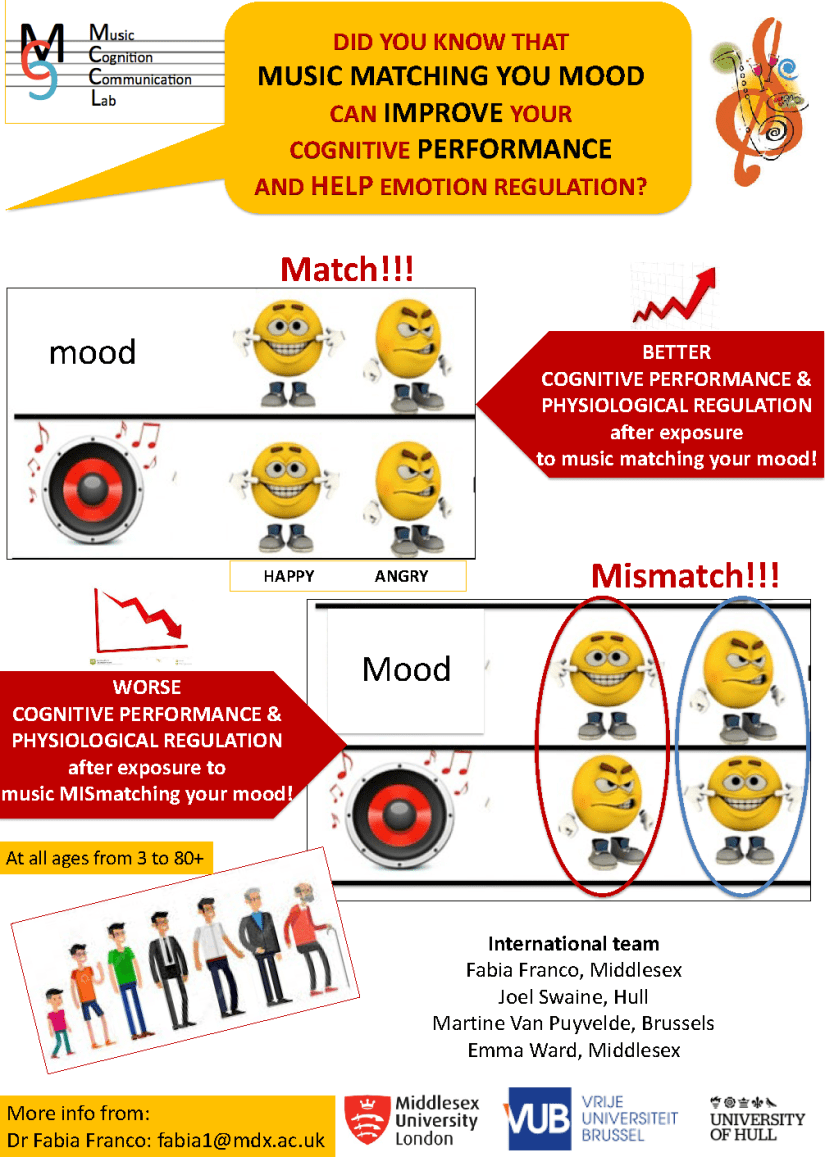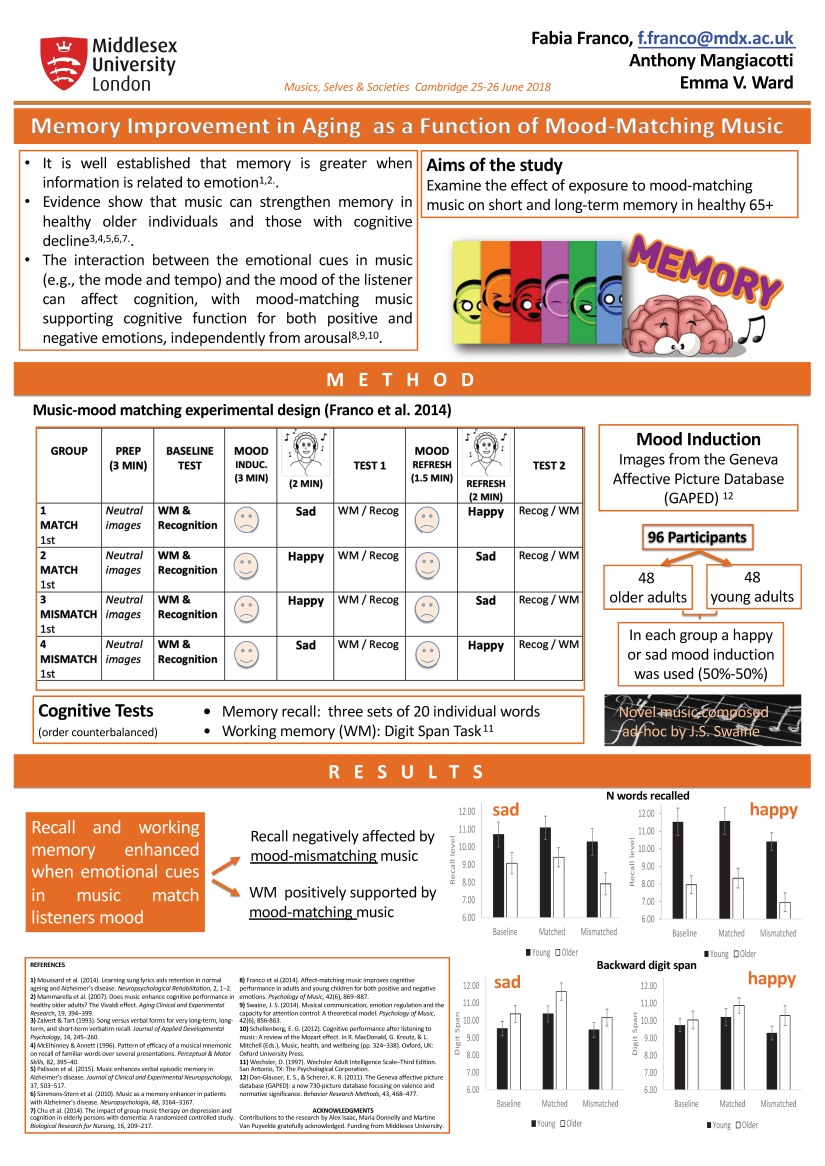Benefits of mood-matching music

1 Our first study (Franco, Swaine et al. 2014):
Three experiments assessed the hypothesis that cognitive benefits associated with exposure to music only occur when the perceived emotion expression of the music and the participant’s affective state match. Experiment 1 revealed an affect-matching pattern modulated by gender when assessing high-arousal states of opposite valence (happy/angry) in an adult sample (n = 94) in which mood classification was based on self-report, and affective valence in music was differentiated by mode and other expressive cues whilst keeping tempo constant (139 BPM). The affect-matching hypothesis was then tested in two experiments with children using a mood-induction procedure: Experiment 2 tested happy/angry emotions with, respectively, 3–5-year-old (n = 40) and 6–9-year-old (n = 40) children, and Experiment 3 compared happy/sad emotions (i.e., states differing both for valence and arousal profiles) with 3–5-year-old children (n = 40), using music pieces differentiated also by fast vs. slow tempo. While young children failed to discriminate systematically between fast tempo music conveying different emotions, they did display cognitive benefits from exposure to affect-matching music when both valence (e.g., mode) and arousal level (e.g. tempo) differentiated the musical excerpts, with no gender effects.
Keywords arousal, central executive, child development, emotion, Mozart effect
Franco, F., Swaine, J. S., Israni, S., Zaborowska, K. A., Kaloko, F., Kesavarajan, I., & Majek, J. A. (2014). Affect-matching music improves cognitive performance in adults and young children for both positive and negative emotions. Psychology of Music, 42(6), 869-887. https://doi.org/10.1177/0305735614548500
2 Extending the paradigm above to study older adults and aging (with Dr Emma Ward,Middlesex University London):

3 Ongoing study with Dr Martine Van Puyvelde (Brussels):
Watch this space….. extending the work above, here we have improved the design, and we are collecting data with children using both cognitive measures and physiological measures (RSA). Work in progress.
